Chapter 3 – Scherzo
Did Mrs Macarthur’s second piano replace the first one?
Bill Bradshaw
| Date | Event |
|---|---|
| 1942 | Purchase of Longman & Broderip piano (initially dated as 1781 by Bradshaw) from a family called Matthews (or Mathews) who lived near Parramatta. The piano was missing its keys and was in disrepair. Bill Bradshaw said that the Matthews family told him that they had only kept the piano because they believed it had once belonged to Elizabeth Macarthur. It had been in the Matthews family for two or three generations. |
| 1940s | Bill Bradshaw sold the piano to Albert Briskie, a piano dealer who attempted to restore the piano by installing keys from another piano. |
| 1969 | Bill Bradshaw bought the piano back from Albert Briskie. It was now missing the front fall of the lid, which had been in place earlier. |
| 29 May 1969 | Bill Bradshaw sold the Longman & Broderip piano to Brian Barrow, the current owner. |
| 29 Oct 1973 | Bill Bradshaw bought 3 items, one being “a square piano by Beck for self”, from Adam Barber of 82 Murriverie Road, North Bondi. |
| 31 Oct 1973 | Bill Bradshaw returned to 82 Murriverie Road North Bondi to purchase 4 more items from Adam Barber. |
| 1 Nov 1973 | Bill Bradshaw returned for a third time to 82 Murriverie Road North Bondi, to purchase 3 more items from Bobby Lee on behalf of Adam Barber. |
| Mid-Oct 1986 | Stewart Symonds purchased a Beck piano from Bill Bradshaw. |
Note that the Longman & Broderip piano purchased from the Mathews family in 1942 was stamped with the serial number 604. Access to later information more accurately dates the piano’s manufacture as 1785-1786.
Also note that the Beck piano Bill bought for himself in October 1973 was almost certainly playable. I have now had the opportunity to thoroughly review Bill Bradshaw’s “Police Record” books – books all antiques dealers had to keep that were regularly inspected by police. The record books show that Bill only ever bought one Beck piano – the one recorded in his record book of October 1973. Brian Barrow, the owner of the Longman & Broderip piano, was frequently in Bill Bradshaw’s shop and storeroom at the back of the shop. He says he never saw that piano, and Bill never showed such a piano to him, though he would have liked to have seen it, as he had bought a square piano from Bill in 1969. Added to that, Brian Barrow was often referred to important clients to restore antique furniture, and he was capable of restoring the delicate Tunbridge-ware marquetry that was on the Beck piano, but he never saw the piano, yet that piano had survived the sea voyage, the conditions in the new colony, and the floods in Windsor – seemingly with no scratch. . This is curious. It is also curious that Bill was able to buy from a medium size semi in North Bondi:
• Chippendale Tea Table, 2 gilt chairs, and a Square Piano by Beck for self on 29 October 1973;
• A fire screen desk in satinwood, 1 Viennese square piano, 1 gilt couch, 1 Mahogany gaming table and 1 gilt arm chair on 31 October 1973; and
• A Chippendale serving table, a William & Mary chest [of drawers?], and a George II side table.
In three days, Bill bought from Adam Barber a total of 11 antiques for $3,080. Using the Reserve Bank of Australia inflation calculator,10 that is estimated to be about $28,500 in today’s money. Why could Barber sell, in three days, property worth over $3,000 in 1973 money! That was half the average annual income in NSW at the time11 and enough for a deposit on a house. Where did all those antiques come from? I can be fairly sure that Adam Barber had only been at the house at 82 Murriverie Road, North Bondi for less than a year, as it was purchased by Charlotte Marie Barnes of Vaucluse, occupation “Clerk”, in October 1972. CM Barnes never lived at Murriverie Road, according to the Australian Electoral Roll. She sold the property in September 1985. An exhaustive search for Adam Barber, Barbar, or Barbour has found nothing. As Alice in Wonderland cried, “Curiouser and curiouser!” My take on the arrangements at 82 Murriverie Road is that the house was let to someone who had no intention of staying put. I suspect Adam Barber and Bobby Lee were importers or associated with importers, and were looking for a quick sale. Of course one could put more sinister motives on to those people, but there is no history of any of Bill’s purchases being the subject of a police investigation.
Red herrings
Varney Monk is mentioned in the blog on https://www.colonialdance.com.au/piano-of-the-first-fleet-29.html. The Colonial Dance website12 says,
In the 1960s Elizabeth Macarthur’s piano was said to be owned by a Mrs Varney Monk. Later it was said that Queen Street Antiques dealer, Bill Bradshaw, either owned it or knew of its location. This comment is from Scott Carlin.13
I have come to the conclusion that for the purposes of locating any old square piano, Varney Monk is a distraction. She is, however, an interesting person in her own right. She was a composer. Born in Bacchus Marsh, Victoria on 18 January 1882, she moved to Manly NSW as a teenager and married Cyril Monk in 1914. The 1947 edition of Who’s Who gives details. Note that Varney Monk collected antique furniture as recreation. Perhaps one reason why Varney Monk was able to collect antiques was that her daughter’s father in law was an importer. There is no record of Bill Bradshaw ever buying antiques from, or selling antiques to, Varney Monk, although I suppose you could hypothesise that Monk sold a piano to Barber. She died on 7 February 1967. Her probate record14 shows no old square pianos, in fact no piano at all. If the square piano was sold to Barber, it was before 1967, and this doesn’t really fit. Nor does Cyril Monk’s probate indicate any ownership of a square piano. He died on 7 March 1970, and probate was granted on 7 July 1970. As Cyril was a violinist, it is not surprising to find a violin (value $100) amongst his personal property. He also owned one Rich Lipp & Son Grand Piano, value $50. I have not attached the probate records of the Monks as they are not relevant – there was nothing to find, except a few red herrings.
Hearsay, assumptions, and the Windsor floods
Here is where the hearsay and assumptions take over. Lancaster proposes three different provenances for the Beck piano. Firstly, in 1838 John Blackman, auctioneer, held a sale, which included a Beck piano – of course the assumption is already that George Worgan’s piano was a Beck piano. The advertisement is not unusual. The purchaser of the piano lived 30 miles out of Sydney. Lancaster and Symonds allege that meant Windsor, as there “wasn’t much else 30 miles out of Sydney in 1838″.15 Campbelltown, or Campbell Town as it was known back then was thriving in 1838. It is 30 miles out of Sydney. Geoffrey Lancaster says in his book,
William Bradshaw … was regularly associated with reliable, substantiated and accurate information concerning the provenance of antiques—be it pianos or other artefacts; his knowledge was prodigious, and his insights were commonly respected.16
The claim for the piano being Mrs Macarthur’s piano is via word of mouth, from Bill Bradshaw to Stewart Symonds.17 Symonds said that Bill Bradshaw told him that the piano came from a farmhouse in Windsor. Bill is purported to have said,
The instrument had been passed down through generations of the family who owned it—perhaps even since John Blackman’s auction of 6 June 1838. The owners of the instrument were adamant that it had come to Australia with the First Fleet. Although there was no documentary evidence proving that the instrument was George Worgan’s piano, the lady of the house recounted that the recurring mantra uttered by generations of mothers in the family to their children was: ‘Don’t bang on that piano; be careful with it, because it came out with the First Fleet.’ Accordingly, for generations, members of the family had been allowed to play the instrument only under the strictest supervision.18
BUT, the piano had been moved to the laundry, and it was sold to pay for a new washing machine. Yet it is in perfect condition. Is there a record of the name of the person who sold the piano to Bill? Is there a record of a sale of a piano from somewhere in Windsor? Did Bill Bradshaw provide a written provenance on the piano? If so, why does Lancaster not present the evidence? His book – volumes 1 and 2 has 1,450 pages, but no written statement about the Beck piano from Bill Bradshaw. Bradshaw’s “Police Record Books” (these records are kept by all registered antiques dealers in case of fraud or theft involving antiques) are still in existence. Their scrutiny does not substantiate this Windsor story, and yet the books contain records of multiple purchases and sales of pianos dating back to March 1945. No doubt Bill Bradshaw’s knowledge of antiques, including pianos, was prodigious. Perhaps the memory of what he is supposed to have said has faded somewhat. In mid-October 1986 Stewart Symonds purchased the Beck piano from Bill Bradshaw.19 Symonds recounted to Geoffrey Lancaster that when purchasing the piano that was supposed to be from the First Fleet and to have come from “a farmhouse near Windsor”20, Bradshaw curiously asked him not to tell anyone: 21
… when he gave Bradshaw a deposit to purchase the Beck piano in mid-October 1986, Bradshaw asked him not to ‘brag about it’, and not to ‘make a noise’ about owning the instrument or in relation to the instrument’s provenance.
Could it be that Bill Bradshaw had managed to “gild the lily” with a few vague allusions to the First Fleet, and made that sale on the strength of the “Australiana” craze that had swept Australia on the eve of the bi-centenary of the First Fleet’s arrival BUT, he realised later that Stewart Symonds had taken him a little too literally and now, embarrassingly, it would be on display as the First Fleet piano?! So many questions would be asked!
Another issue with a piano being in a laundry of a farmhouse in Windsor is the floods. The family might have worried about the children thumping the keyboard, but what about all that water? A laundry is usually on the ground floor. In 1864 there was a massive flood in Windsor. The Illustrated Sydney News of 16 July 1864 tells a sorry tale of just about everywhere in Windsor being inundated. A picture tells it all: See the picture to the right from the Illustrated Sydney News of 16 July 1864 page 4. There were more floods in Windsor over many years. There was another flood in 1867. The 19 metre high-water mark is shown in the picture from a Daily Telegraph article22 written on the sesquicentenary of the flood. Wikipedia explains a bit further23:
The Hawkesbury River (also Hawkesbury-Nepean River), is a semi–mature tide dominated drowned valley estuary located to the west and north of Sydney … The Hawkesbury River and its associated main tributary, the Nepean River, virtually encircle the metropolitan region of Sydney.
There was also very high rainfall in the vicinity of Windsor in January 1887, May 1889, March 1890, March 1892, March 1894, January 1911, May 1913, April 1946, January 1949, June 1950, January 1951, July 1952, May 1953, and February 195624. As a result, Windsor became infamous for floods. After Warragamba Dam opened in 1960, floods became less likely.
As one of the many examples, The Sun reported on 6 August 1952 that
Windsor residents are preparing for the peak flood expected tonight or early tomorrow … the [Hawkesbury] River has risen to 29ft 8in25, four inches below danger level and is still rising steadily. When the river reaches 30 ft the flood boat will be used to rescue men, women and children.26
Lancaster indeed says27:
Regardless of how Worgan’s piano managed to survive the recurring and calamitous flooding of the Hawkesbury River during the nineteenth and twentieth centuries, it appears that the 1780/86? Beck square piano, in the absence of any apparent water damage (if the instrument was sold at auction on 6 June 1838 to the owners of a farm in the Hawkesbury River flood zone, and if the instrument remained in the area until Bradshaw acquired it in 1973), miraculously defied the turbulent waters and remained unscathed.
Could this piano at Windsor have survived all those floods in such pristine condition? It certainly would be a miracle.
Think what you might about the veracity or otherwise of the Windsor farmhouse story, it is not substantiated by any document. In contrast, Brian Barrow’s piano has a written provenance signed by Bill Bradshaw (see document shown at the end of Chapter 2 of this series).
Another try at where the Beck piano may have come from in the vicinity of Windsor comes from Lancaster’s book, where he refers to Ken Muggleston:28
Muggleston recalled to Robinson29 that Bradshaw had owned the First Fleet piano, and that the instrument had come from the Macarthur-Onslow family. The Macarthur-Onslows are direct descendants of John and Elizabeth Macarthur. Unfortunately, Muggleston could not remember exactly why he associated the Macarthur-Onslows with the piano. Muggleston had the strong impression that the instrument was Stewart Symonds’ 1780/86? Beck. In 1974, Muggleston [accepted] a job as a drama designer at the then Australian Broadcasting Commission (now Corporation; ABC). Muggleston recalled that within that context, he had worked with a Macarthur-Onlsow. It is reasonable to conjecture that whilst employed by the ABC, Muggleston encountered Arthur Leslie ‘Red’ Harrison (1932–2008). … Harrison’s second marriage, in 1971, was to … Pamela Jane Macarthur-Onslow (1936–2012). Harrison and Pamela lived at Macquarie Grove, Camden, a property adjoining the Camden Park estate established by John Macarthur in 1806. It is reasonable to suppose that Harrison and/or Pamela spoke to Muggleston about the First Fleet piano.30
Later, and yet more hearsay, is the report of an email from Joel Robinson to Lancaster.31 Robinson claims in this email that Muggleston had said to him that
Bradshaw had owned the First Fleet piano, and that the instrument had come from the Macarthur-Onslow family …[and] he had the strong impression that the instrument was Stewart Symonds’ 1780/86? Beck.
Lancaster goes on to say,
Of one thing Muggleston seems certain: any who regard Brian Barrow’s 1785/86? Longman & Broderip square piano as the First Fleet piano ‘are deluding themselves’.32
Brian Barrow (the owner of the Longman & Broderip piano) is a long-term friend of Ken Muggleston. Ken frequently visited Brian before he (Ken) became too elderly to do so. Brian has asked Ken about the “deluding themselves” reports several times, and each time he says it is just not true. Ken Muggleston strongly denies Lancaster’s claims.33.
I have a great deal of suspicion for hearsay, but when it is hearsay about hearsay, it really cannot be relied upon. In the first instance, Lancaster says that because Muggleston worked with the brother-in-law of a Macarthur-Onslow, there would have been a conversation between them about a 200 year old piano owned by George Worgan. Why would they even think of it? In the second instance, Lancaster is relying on something Ken Muggleston said to Joel Robinson, which was then passed on to Lancaster. “Send reinforcements we’re going to advance” has become “Send three and fourpence, we’re going to a dance”34.
My conclusion is that film-maker Joel Robinson, was mistaken about the statements that Ken Muggleston is purported to have made, saying that Stewart Symonds’ antique Beck piano (now at the WAAPA) is the first fleet piano, and that Joel Robinson transmitted those incorrect statements via email to Lancaster. Recently, Brian Barrow visited Ken Muggleston. The issue of the “deluding themselves” statement came up once again. Ken made a statement in a letter to Brian saying that Lancaster’s claims about what he (Ken) said about Brian Barrow’s piano were untrue. The letter is shown to the right. I think this ends the debate. Ken Muggleston is adamant he never said any of the words reported by Robinson to Lancaster who unfortunately repeated them in his book without, it seems, checking the source.
Now, with a third go at the piano being somewhere on the “outskirts of Windsor”, Lancaster now conjectures that might have been at the Gilbulla Stud Farm at Grose Wold. That is hardly anywhere near Windsor. Lancaster himself says it is 17 km from Windsor. It is like saying Bondi Beach is on the outskirts of Strathfield. The other two versions of the provenance of the Beck piano involve the piano coming from London and the antique dealer’s sticker being removed by Bill Bradshaw. To be fair, it would be up to the Western Australian Academy of Performing Arts to allow the Beck piano to be examined forensically for the remains of an antique dealer’s sticker.
See chapter 4 for the denouement!
This website will be updated when new material comes to light.
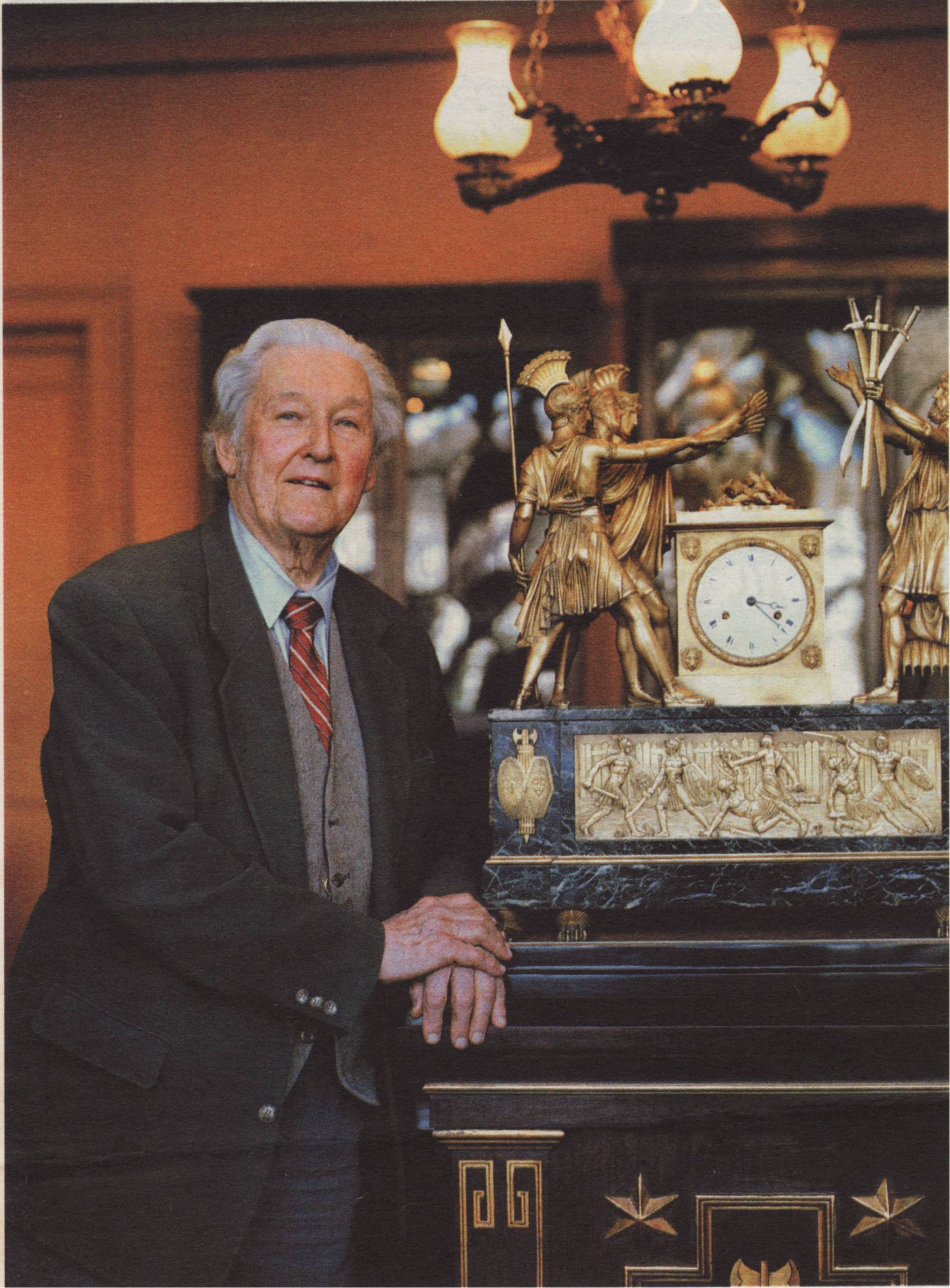
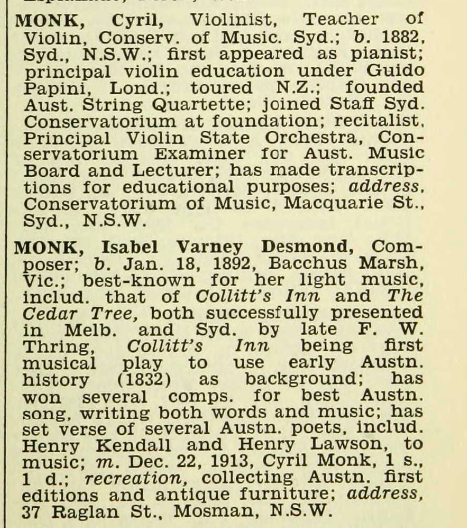
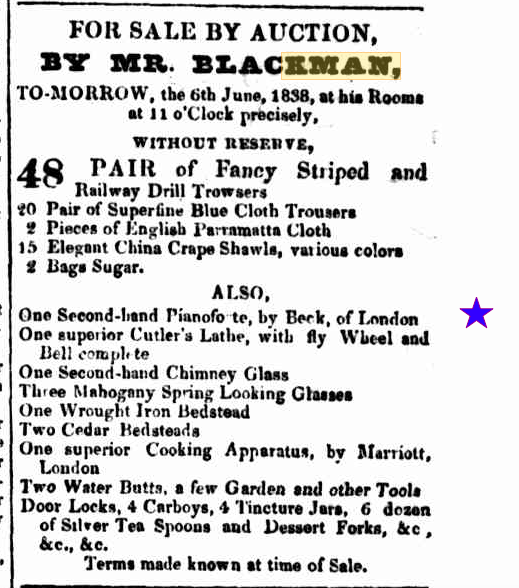
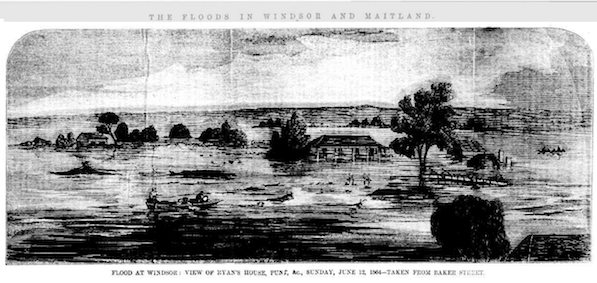
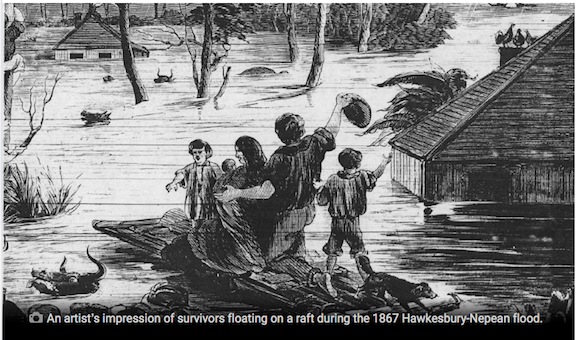

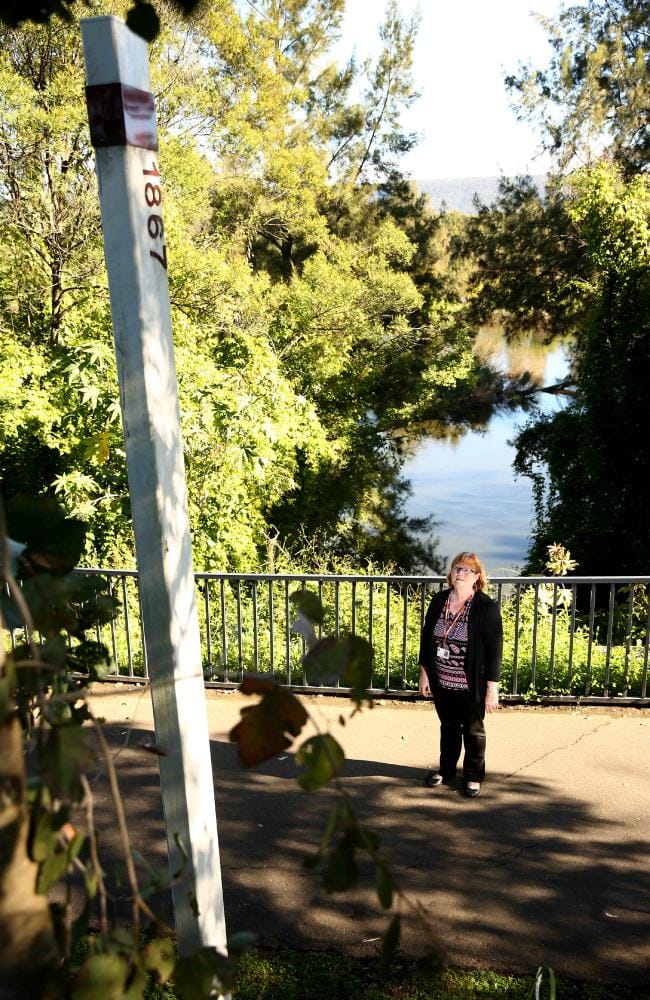
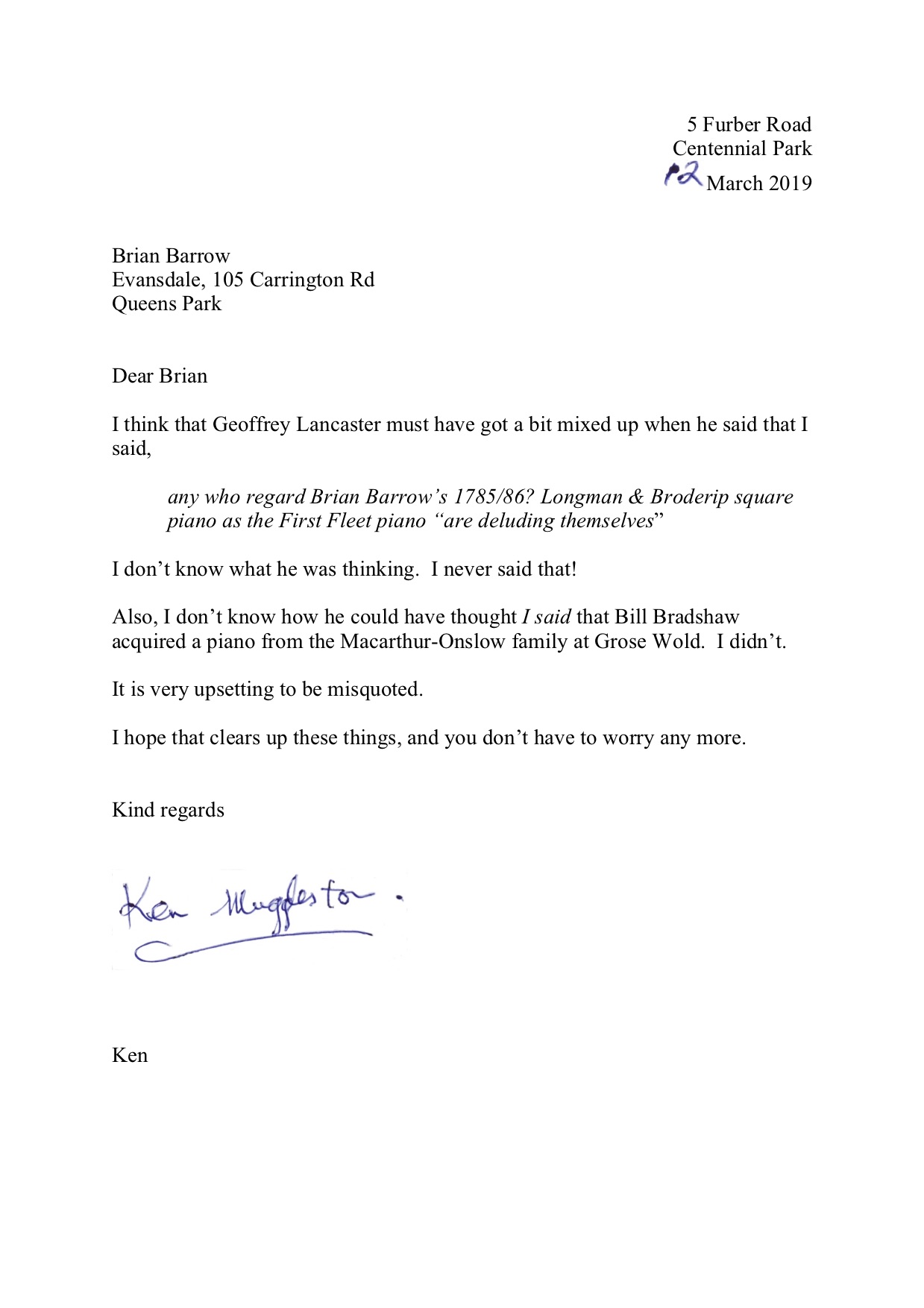
- Geoffrey Lancaster, The First Fleet Piano: A Musician’s View, ANU Press, 2015, Volume 1, Chapter 14
- ibid, page 126
- Michelle Scott-Tucker, Elizabeth Macarthur: Life at the Edge of the World, 2018, The Text Publishing Company, Melbourne, Australia, page 173
- Ibid, page 207
- Ibid, page 208
- Autograph letter signed by Sibella Macarthur-Onslow to Herbert James Carter, regarding a piano belonging to her great grandmother, 12 May 1919, Mitchell Library, NSW, call no. MLDOC 166
- Eulogy on the Death of Bill Bradshaw, by the Hon P J Keating, 25 November 2009, Woollahra.
- https://www.colonialdance.com.au/piano-of-the-first-fleet-29.html, accessed 28 September 2018. this is no longer available. Instead, please see https://www.historicaldance.au/piano-of-the-first-fleet accessed 28 July 2024
- Events from 1942 to 1969 are from Plates 326 and 327, the images of document that appear in The First Fleet Piano: A Musician’s View Volume 2 by Geoffrey Lancaster, ANU Press: downloaded version, pages 146 and 147.
- http://www.rba.gov.au/calculatoraccessed 2 March 2019
- Australian Bureau of Statistics on weekly income in 1960s and 70s, http://www.abs.gov.au/AUSSTATS/abs@.nsf/DetailsPage/6302.0Jun%201973?OpenDocumentaccessed 29 September 2018
- Heather Clarke – author of Colonial Dance website, op.cit.
- Scott Carlin – Manager Tasmanian Museum & Art Gallery
- State Archives Authority of NSW Item series 4-631151 probate granted 30 May 1967
- Geoffrey Lancaster, op. cit., Volume 1, page 690
- Geoffrey Lancaster, op. cit., Volume 1, page 10
- Bill Bradshaw sold the Beck piano to Stewart Symonds with the purported story that it had come from a farmhouse in Windsor. Symonds later donated the Beck piano to the WAAPA.
- Geoffrey Lancaster, op. cit., Vol 1 page 691
- Just to recoup, if you are finding all this very confusing (as I have), the piano that is the subject of Geoffrey Lancaster’s two volume book, The First Fleet Piano: A musician’s view” was donated by Stewart Symonds to Lancaster’s employer, the Western Australian Academy of Performing Arts
- Geoffrey Lancaster, op. cit., Volume 1, page 690.
- Geoffrey Lancaster, op. cit., Vol 1 page 709
- Daily Telegraph, 21 July 2017, “Day Hawkesbury farms were lost in 19m high once-in-a-century flood”, by Troy Lennon
- https://en.wikipedia.org/wiki/Hawkesbury_River accessed 2 March 2019
- http://www.bom.gov.au/climate/data accessed 28 September 2018.
- A mere 9 metres!
- Sun (Sydney, NSW: 1910 – 1954), Wednesday 6 August 1952, page 1
- Geoffrey Lancaster, op.cit, volume 1, page 696
- Muggleston was from time to time Bill Bradshaw’s gentleman’s gentleman.
- Joel Robinson, a film-maker with whom Muggleston worked.
- Geoffrey Lancaster, op. cit., volume 1, page 702.
- Geoffrey Lancaster, op. cit., volume 1 page 700
- Geoffrey Lancaster, op. cit., volume 1, page 703
- During 2018 Brian reported to the author frequent telephone conversations with Ken Muggleston.
- World War I joke about garbled messages


